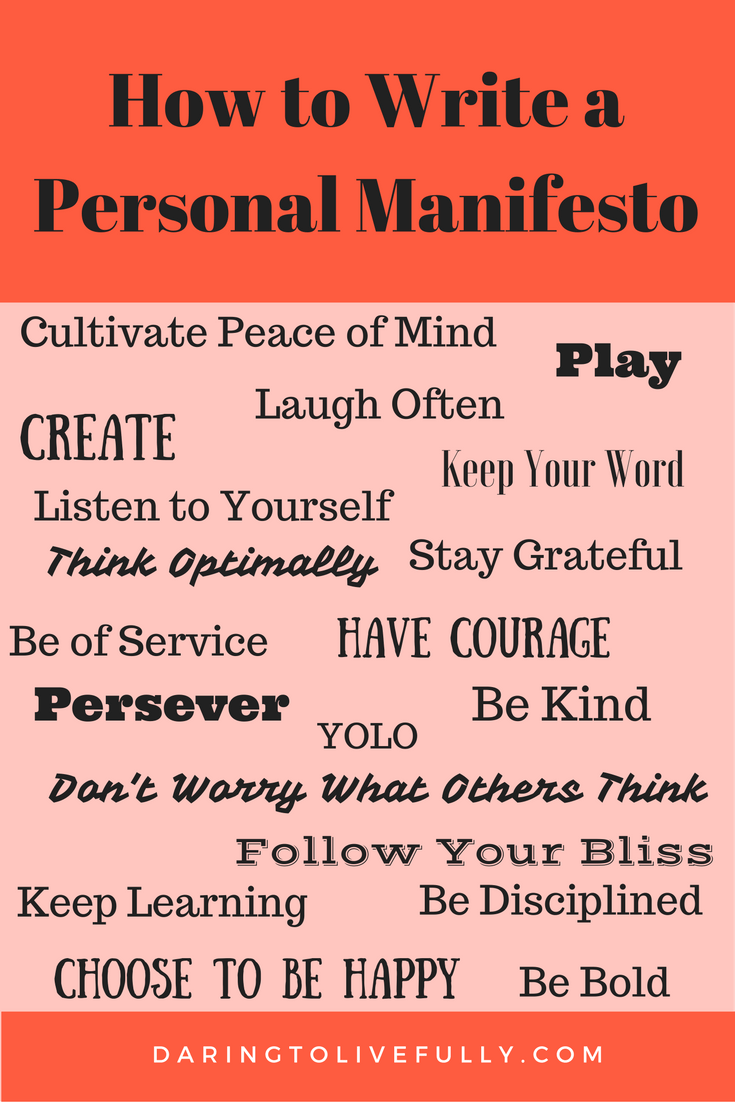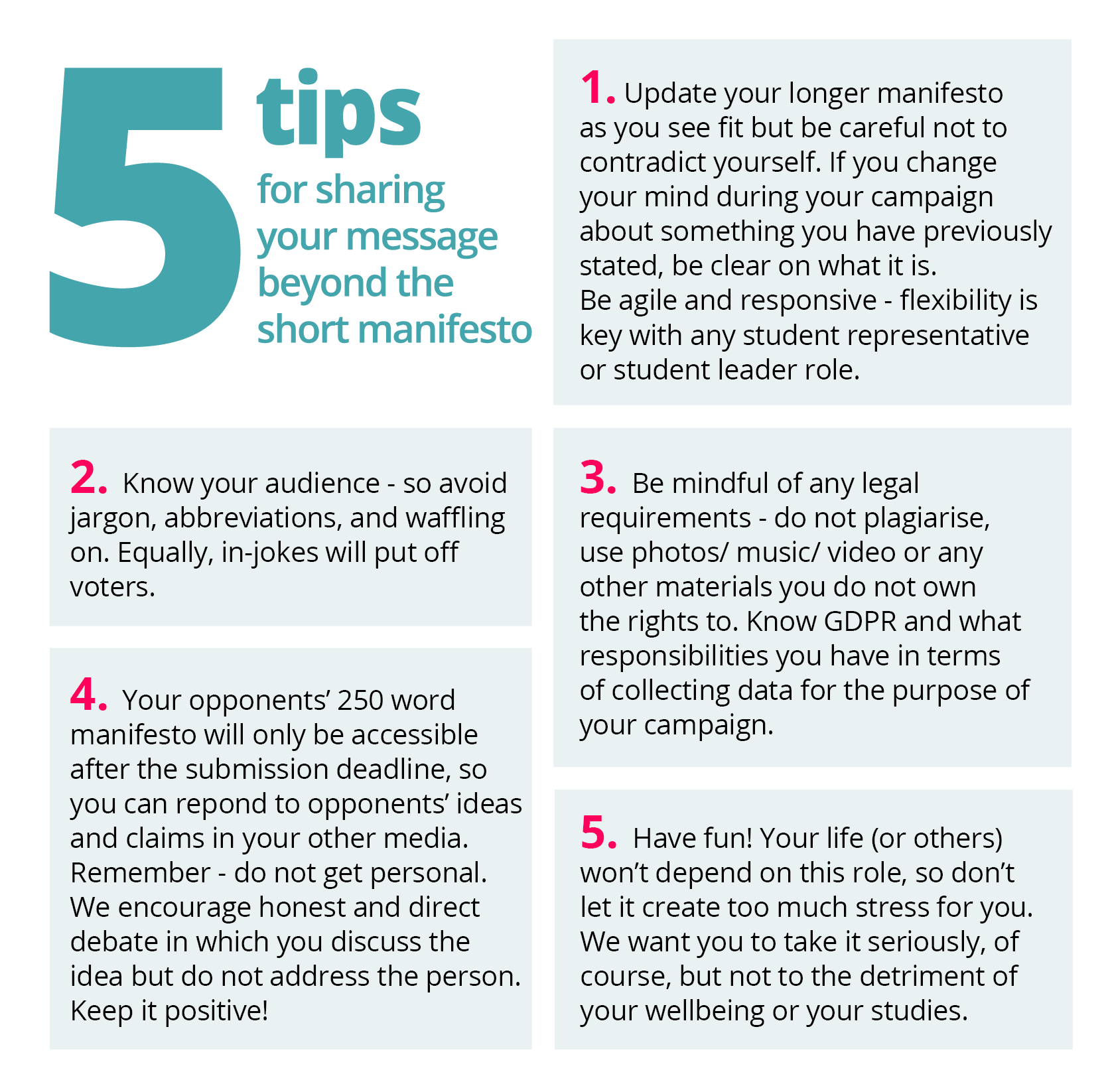Examples of Manifestos for Students
Students can create manifestos to outline their goals, beliefs, and values. Manifestos can cover a wide range of topics, from educational aspirations to personal growth and societal change.
For example, a student manifesto may address the importance of academic excellence, the pursuit of knowledge, and the promotion of diversity and inclusivity on campus. Additionally, it could express a commitment to community service and environmental sustainability. Manifestos serve as powerful tools for students to articulate their vision and inspire others to join them in their endeavors.
By crafting a clear and compelling manifesto, students can effectively communicate their principles and aspirations, fostering a sense of purpose and direction in their academic and personal lives.
Importance Of Manifestos
Manifestos are powerful tools that help students articulate their beliefs, values, and goals. They serve as a guiding light, providing a clear direction for students to follow as they navigate their academic journey.
Inspiring Student Leadership
Manifestos inspire students to take on leadership roles and make a positive impact in their communities. By clearly outlining their principles and vision, students can rally others around a common cause and drive meaningful change.
Setting Clear Goals
Manifestos help students set clear and actionable goals for themselves. By defining what they stand for and what they aim to achieve, students can stay focused, motivated, and on track to reach their aspirations.
Characteristics Of Effective Manifestos
When it comes to crafting a powerful and impactful manifesto for students, it’s essential to consider the characteristics that make it effective. A well-crafted manifesto should embody clarity, alignment with student values, and a compelling call to action. Let’s delve into the key characteristics of effective manifestos that resonate with students.
Clarity And Conciseness
A successful student manifesto should be clear and concise, delivering its message in a straightforward and easily understandable manner. It should avoid ambiguity and convoluted language, ensuring that every student can grasp its purpose and significance at a glance. By being clear and concise, the manifesto becomes more accessible and impactful to a wider audience.
Alignment With Student Values
An effective student manifesto should align closely with the values and aspirations of the student body it represents. It should reflect the collective beliefs and ideals of the students, addressing their concerns and advocating for the changes they wish to see. When the manifesto resonates with the core values of the students, it garners greater support and inspires action, making it a potent catalyst for positive change.
Sample Manifesto Templates
Explore a diverse collection of sample manifesto templates tailored for students. These examples offer inspiration and guidance for crafting impactful manifestos for academic or personal endeavors. Unlock your potential with these insightful and empowering resources.
As a student, writing a manifesto can be a powerful way to express your views and take a stand on issues that matter to you. A manifesto is a statement of intent, outlining your beliefs, values, and goals. It’s a way to inspire others and rally support behind your cause. However, not everyone knows how to start writing a manifesto. That’s where sample manifesto templates come in handy. These templates provide a structure and format that you can use as a starting point for your own manifesto. Here are some sample manifesto templates to help you get started.Empowering Student Voice
One of the key goals of a student manifesto is to empower student voice. As a student, you have a unique perspective on the issues that affect you and your peers. You have a right to be heard and to have a say in decisions that impact your education and future. Here are some key points to include in a manifesto that empowers student voice:- Advocate for student representation on decision-making bodies
- Promote open communication between students and administrators
- Encourage student-led initiatives and projects
- Campaign for the right to free speech and expression
Promoting Inclusivity
Another important goal of a student manifesto is to promote inclusivity. Every student deserves to feel welcome and valued in their school community, regardless of their background, identity, or beliefs. Here are some key points to include in a manifesto that promotes inclusivity:- Advocate for diversity and representation in curriculum and extracurricular activities
- Promote awareness of and respect for different cultures, religions, and identities
- Campaign against discrimination and harassment in all forms
- Encourage the creation of safe spaces for marginalized groups

Credit: m.facebook.com
Analyzing Famous Student Manifestos
When analyzing famous student manifestos, it’s essential to explore the impactful declarations made by students in various movements and causes. By delving into the manifestos of civil rights movements and environmental activism, we gain insight into the powerful messages and calls to action that have driven positive change.
Civil Rights Movements
The Civil Rights Movements witnessed the emergence of powerful student manifestos that demanded equality, justice, and an end to racial discrimination. From the Port Huron Statement by Students for a Democratic Society to the Tucson Chicano Student Movement of Aztlan (MEChA), these manifestos advocated for social and political transformation, emphasizing the rights and empowerment of marginalized communities.
Environmental Activism
In the realm of Environmental Activism, student manifestos have played a pivotal role in raising awareness about ecological issues and advocating for sustainable practices. Examples include the Fossil Free campaign, which urged educational institutions to divest from fossil fuels, and the Youth Climate Strike Manifesto, calling for urgent action to combat climate change and protect the planet for future generations.
Crafting A Personal Manifesto
When it comes to personal growth and self-discovery, crafting a personal manifesto can be a powerful tool for students. A personal manifesto is a declaration of your core beliefs, values, and intentions, serving as a guiding principle for your actions and decisions. It is a way to define and articulate what truly matters to you and what you stand for. In this section, we will explore the process of crafting a personal manifesto, focusing on self-reflection and defining core beliefs.
Self-reflection
Self-reflection is the first step in crafting a personal manifesto. It involves taking the time to introspect and examine your thoughts, feelings, and experiences. To begin, find a quiet and comfortable space where you can be alone with your thoughts. Consider using journaling as a tool for self-reflection, jotting down your thoughts, values, and aspirations. Reflect on your past experiences, successes, failures, and the lessons learned from them. Identify the moments when you felt most alive, fulfilled, and aligned with your values. This self-awareness will serve as a foundation for crafting your personal manifesto.
Defining Core Beliefs
Defining your core beliefs is an essential aspect of creating a personal manifesto. Start by identifying the values and principles that are most important to you. Consider what you stand for, what motivates you, and what you aspire to achieve. List down your core beliefs in a clear and concise manner, using simple language that resonates with you. These beliefs will form the backbone of your personal manifesto, guiding your decisions and actions as a student.
Implementing Manifestos In Student Organizations
Discover inspiring examples of manifestos for student organizations to implement powerful and impactful visions for their groups. Crafting a manifesto can unify members and guide the organization towards its goals effectively. By incorporating key principles and values, student manifestos can drive positive change and foster a sense of community among members.
As a student, it’s essential to have a clear vision of what you want to achieve. A manifesto is a powerful tool that can help you define your goals, beliefs, and values. By creating a manifesto, you can communicate your ideas to others and inspire them to take action. In this post, we’ll explore some examples of manifestos for students and discuss how you can implement them in student organizations.Creating Collective Vision
One of the essential elements of a manifesto is a collective vision. It’s a statement that defines your goals and aspirations as a group. When creating a manifesto for a student organization, it’s essential to involve everyone in the process. By doing so, you can ensure that everyone has a voice and that the vision reflects the group’s values and beliefs. Here are some tips to help you create a collective vision:- Hold a brainstorming session to get everyone’s input
- Identify common themes and values
- Write a draft of the collective vision
- Get feedback from the group
- Finalize the collective vision
Driving Action
A manifesto is not just a statement of beliefs and values. It’s also a call to action. To make your manifesto effective, you need to inspire people to take action. Here are some tips to help you drive action:- Identify specific goals that align with your collective vision
- Create an action plan that outlines the steps needed to achieve those goals
- Assign responsibilities to each member of the group
- Set deadlines for each step of the action plan
- Hold regular meetings to review progress and make adjustments as needed
Manifestos For Educational Change
Manifestos for educational change are essential for students to voice their aspirations and concerns, advocating for improvements in the education system. These manifestos aim to bring about positive changes in school policies and enhance the overall student experience. By outlining specific goals and actions, students can effectively drive educational reform and contribute to a more impactful learning environment.
Improving School Policies
Improving school policies is a crucial aspect of manifestos for educational change. Students can address issues such as diversity and inclusion, mental health support, bullying prevention, and academic integrity. By advocating for more comprehensive policies in these areas, students can foster a healthier and more inclusive learning environment. This can lead to a positive impact on student well-being and academic success.
Enhancing Student Experience
Enhancing the student experience is another important focus of manifestos for educational change. Students can propose initiatives to improve extracurricular activities, enhance access to resources, and promote collaborative learning. By prioritizing the overall student experience, manifestos can drive positive changes that contribute to a more fulfilling and enriching educational journey.

Credit: uclpimedia.com
Impact Of Manifestos On Student Communities
Manifestos play a crucial role in shaping student communities by instilling a sense of purpose and direction. Let’s explore how manifestos can make a difference in the lives of students.
Fostering Unity
- Manifestos unify students towards common goals.
- They encourage collaboration and solidarity among peers.
- Manifestos strengthen the sense of belonging within the student body.
Inspiring Positive Change
- Manifestos motivate students to advocate for change in their community.
- They empower individuals to voice their opinions and take action.
- Manifestos spark innovation and creativity in addressing issues.

Credit: daringtolivefully.com
Conclusion
In crafting your own manifesto, remember to stay authentic and true to yourself. Manifestos can be powerful tools for setting intentions and guiding your actions. Use these examples as inspiration to create a document that reflects your values and aspirations as a student.
Embrace your unique voice and vision.




